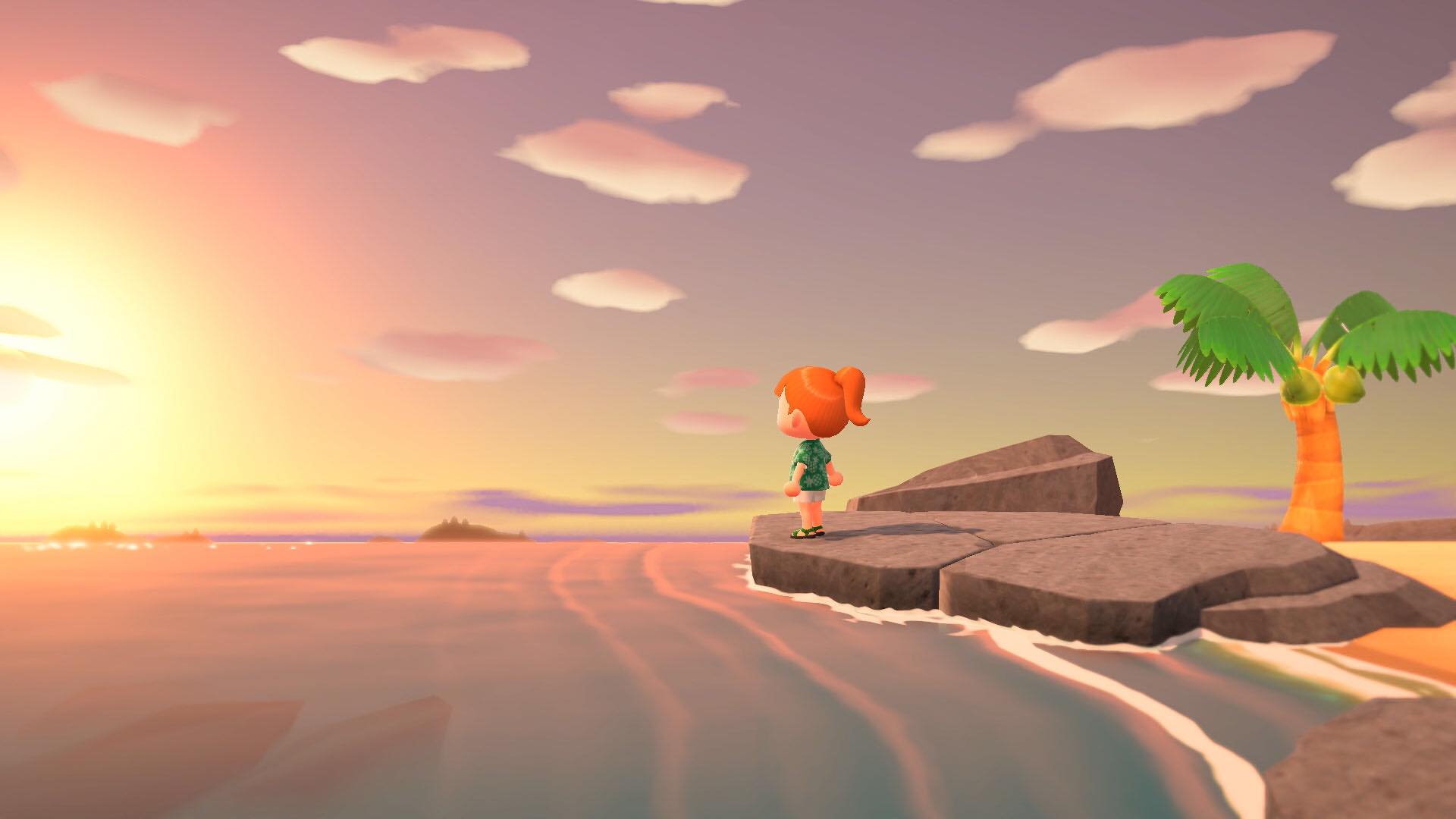Image description: An in-game capture shows a female figure standing on large rocks by the beach. She looks out to the setting sun. There is a coconut tree behind her.
By Cate Tweedie
Animal Crossing: New Horizons arrived to a world in chaos. Released in Australia on March the twentieth – and with the world in lockdown – the latest game instalment in the Animal Crossing series is a much-welcomed vacation to a blissful island paradise.
The first Animal Crossing game was released in 2001 for the Nintendo 64 and Gamecube. For a lot of teenagers and twentysomethings, there is a great deal of nostalgia associated with the latest release.
For the uninitiated, Animal Crossing is a social-simulation series of games in which you catch fish, grow fruit, find bugs and fossils, and generally try to make your place of habitancy the nicest it can be. This is all while you meet a load of anthropomorphised animals, who are always looking for a new home for some reason, and become part of your town.
Animal Crossing progresses in real time: the in-game clock is the same as yours at home. Seasons also progress according to your global hemisphere, and both the in-game environment, and the seasonal availability of fish and insects, changes with it.
Housing and infrastructure changes usually take a day to complete, which means New Horizons is a game you cannot binge play. Unlike many other games available, the pacing is set by the game itself, rather than how many hours the player dedicates.
As someone who tends to play games to completion within a short period of time, New Horizons offers a refreshing change. Often, I’ll binge play games because I become highly immersed; I want to maintain the focus of the story; and I’m eager to see what comes next. But since Animal Crossing’s progression occurs in real-time, I can complete tasks for the day and set it aside, leaving something different to do tomorrow. In a time when we’re all stuck inside, and with this situation unlikely to change anytime soon, it is a relief to have something to look forward to each day.
With New Horizons comes the feeling of greater connection. Multiplayer is available both locally and online; players can visit each other’s islands to hang out and take a tour. It should be noted that online multiplayer is only available through Nintendo’s Online subscription service, but at $30AUD for an entire year, it isn’t particularly dear when compared to other subscription services.
Each island can host up to eight players at once. There have been reports of everything from hide and seek and musical chairs, to birthday parties and weddings, as players find workarounds to social isolation. The widespread and popular nature of the game means it has spawned a strong culture of memes, being relatable and recognisable to both seasoned and new players. The shared experience of a game beyond multiplayer is a feasible substitute for human connection in these trying times.
Beyond the elements of connection and routine, New Horizons is perfect for some plain old escapism. In a world where the characters’ biggest worry is Tom Nook’s propensity for capitalist tendencies, being surrounded by nature on your own private island is a refreshing break from COVID-19 anxiety.
The game provides a sense of serenity, structure and control: things that many of us are currently struggling to maintain, as well as the chance to learn real facts about cool bugs, fish and prehistoric creatures. Overall, it is the perfect game for isolation if you’re looking for something wholesome, fun, and suited to multiple playstyles.
Cate is Pelican’s resident memelord and is proud of her museum.
Image courtesy of IGDB and Nintendo

